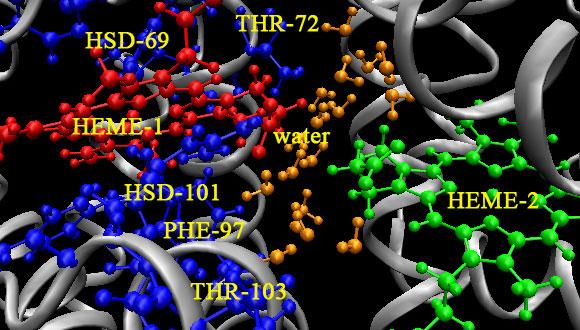סמינר בכימיה פיזיקלית
PhD Seminar
Ms. Marina Poliack, School of Chemistry, Tel Aviv University (Prof. Cheskis Group)
TItle: "Investigation of the mechanism governing the formation of iron oxide nanoparticles in flames"
Abstract: The current work is aimed towards a comprehensive elucidation of the mechanism governing iron oxide nanoparticles (NPs) synthesis in flame-reactors. Iron oxide NPs have a wide range of advanced applications ranging from supercapacitors and lithium ion batteries over electromagnetic wave absorption to magnetic fluids, catalysis, biotechnology/biomedicine, magnetic resonance imaging, data storage, and environmental remediation. Flame-reactors make up a versatile and easily scalable environment for later implementation in the industry. However, due to the harsh flame conditions, in-situ diagnostics, which in the current case are of surmount importance, become increasingly challenging. Described below, are the diagnostic tools utilized throughout the duration of this research, which comprise of both molecular beam sampling (e.g. Particle-Mass-Spectrometry-Quartz-Crystal-Microbalance, Light-Induced-Detuning-QCM) and laser-based techniques (e.g. Intra-Cavity-Laser-Absorption-Spectroscopy, Cavity-Ring-Down-Spectroscopy). The application of these techniques for the case study of iron oxide NPs, along with comparisons to numerical models and finally the implications on the possible mechanism of metal oxide NPs formation in flames are discussed.
MR. Ron Simkovich, School of Chemistry, Tel Aviv University (Prof. Huppert Group)
TItle: "Super-Photoacids and proton transfer in biomaterials"
Abstract: The proton plays a special role in chemistry. Being the smallest and lightest stable positive particle, it participates in a great number of chemical processes. Photoacids are molecules that are weak acids in their ground state and of higher acidity in the excited state. This ability to use light to trigger a reaction of proton transfer to a nearby accepting molecule makes photoacids useful tools to study proton transfer reactions. In the first part of my talk I will present a strong photoacid, quinone cyanine 9 (QCy9). This photoacid has an ultrafast proton transfer process to water and to several monols. The uniqueness of this molecule is that it deviates from the free energy correlation between the proton transfer rate and the ΔpKa, I will propose an explanation to this phenomena. In the second part of my talk I will present a study of biomaterials conducted using a weak photoacid- 8-hydroxy-1,3,6-pyrenetrisulfonate (HPTS), in which we use the change in photoacidity to differentiate between amylose and amylopectin, the two biopolymers that compose starch.


